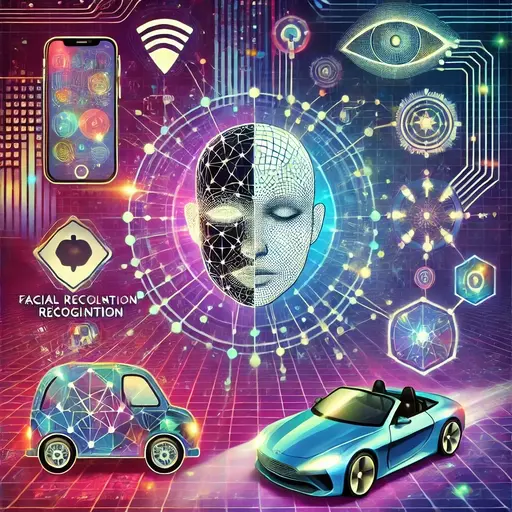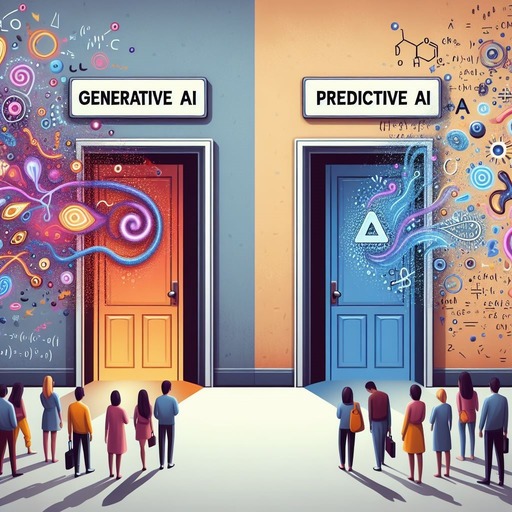Understanding Neural Networks: A Comprehensive Guide

1. Introduction
Hook: Welcome tech enthusiasts and AI novices! Are you curious about how your smartphone recognizes your face or how your email filters spam? The secret lies in neural networks. This sophisticated technology is hiding in plain sight, powering many of the applications you use daily.
Relevance: Neural networks are a fundamental aspect of artificial intelligence and machine learning, transforming industries and enhancing technologies. Whether you're a tech-savvy professional, a business executive looking to leverage AI, or simply fascinated by the latest advancements, understanding neural networks can be incredibly rewarding.
Neural networks might sound like something out of a sci-fi movie, but they are very much a part of our current tech landscape. These systems simulate the way the human brain operates, enabling machines to process information, recognize patterns, and learn from past experiences. From online shopping recommendations to autonomous driving, neural networks have a wide range of applications.
In an age where data is the new oil, neural networks are the refineries. They help extract meaningful patterns and insights from vast amounts of information, making it possible to predict trends, automate tasks, and create more personalized user experiences. Imagine a future where healthcare diagnoses are faster and more accurate, renewable energy is optimized, and learning a new language is as easy as conversing with a well-informed friend—all made possible through the power of neural networks.
As we journey through the basics, types, learning mechanisms, real-world applications, and future potential, we'll see how neural networks are not just a technological marvel but a transformative force for productivity and sustainable innovation. Let’s dive into the fascinating world of neural networks and discover how understanding this technology can open new doors in your professional and personal life.
2. What is a Neural Network?
Definition and Overview: At its core, a neural network is a series of algorithms that recognize underlying relationships in a set of data through processes that mimic the human brain. Neural networks consist of layers of interconnected nodes (neurons), each performing simple computations that collectively address complex tasks. They can be trained to carry out specific functions by adjusting connections based on the data they process.
Neural networks are crucial tools for tasks involving pattern recognition and data analysis, excelling where traditional algorithms fail, such as handling vast volumes of data and identifying hidden patterns.
Key Components:
- Neurons (Nodes): The basic processing units in a neural network.
- Layers: Organized as input, hidden, and output layers.
- Weights: Adjustable parameters determining the strength of inputs.
- Biases: Parameters that adjust the output alongside weights.
- Activation Functions: Functions that determine a neuron's output, such as Sigmoid, TanH, and ReLU.
Neural networks operate by passing data through these layers. Each neuron processes inputs by summing them and applying an activation function. For example, in an image recognition network, the input layer receives pixel values, hidden layers extract features, and the output layer identifies whether an image contains a cat or a dog.
Evolution and Advancements: From early shallow networks with limited capabilities to today’s deep neural networks with dozens of hidden layers, advancements in computational power and data availability have propelled neural networks forward. This has led to innovations in fields like natural language processing, image recognition, and autonomous systems.
3. The Basics of Neural Networks
Fundamental Principles:
- Activation Functions: Critical for determining whether neurons activate, including popular functions like ReLU, Sigmoid, and TanH.
- Backpropagation: The algorithm driving learning, it adjusts weights by propagating errors backward through the network.
- Learning Rate: A crucial hyperparameter that determines the step size for minimizing the loss function.
Types of Layers:
- Input Layer: Where data enters the network.
- Hidden Layers: Perform nonlinear transformations of data; multiple hidden layers lead to deep learning.
- Dense Layers: Fully connected layers standard in many architectures.
- Convolutional Layers: In CNNs, these layers recognize spatial hierarchies in images.
- Recurrent Layers: In RNNs, they pass information across time steps, ideal for sequential data.
- Output Layer: Produces predictions, tailored to the network’s task (e.g., binary or multi-class classification).
4. Types of Neural Networks
Supervised vs. Unsupervised Learning:
- Supervised Learning: Trained on labeled data, learning mappings from inputs to outputs.
- Unsupervised Learning: Finds hidden patterns in unlabeled data, such as clustering similar data points.
Common Types:
- Convolutional Neural Networks (CNNs): Designed for image processing, capturing features like edges and shapes.
- Recurrent Neural Networks (RNNs): Handle sequential data, useful in time-series forecasting and language processing.
- Deep Neural Networks: With multiple hidden layers, they learn complex features at various levels of abstraction.
Specific Architectures:
- Generative Adversarial Networks (GANs): Use adversarial processes to generate realistic data.
- Autoencoders: Used for tasks like dimensionality reduction and anomaly detection.
- Transformers: Revolutionize natural language processing by using self-attention mechanisms.
5. How Neural Networks Learn
Learning Algorithms:
- Backpropagation: Adjusts weights by propagating errors backward, refining the model’s predictions.
- Gradient Descent: Optimizes the loss function, with variants like Stochastic Gradient Descent and Adam enhancing efficiency.
Training Data:
- Data Preprocessing: Involves steps like normalization and augmentation to improve model performance.
- Training, Validation, and Test Sets: Ensure the model learns effectively without overfitting.
Preventing Overfitting:
- Regularization: Penalizes large weights to reduce model complexity.
- Dropout: Randomly ignores neurons during training to prevent over-reliance on specific nodes.
- Early Stopping: Stops training when performance on validation data stops improving.
- Data Augmentation: Increases dataset diversity by modifying existing data.
Hyperparameter Tuning:
- Grid and Random Search: Methods for selecting optimal hyperparameters to improve model performance.
6. Real-World Applications of Neural Networks
Practical Examples:
- Image and Speech Recognition: Neural networks drive technologies like facial recognition and speech-to-text conversion.
- Natural Language Processing (NLP): Neural networks enhance machine translation, sentiment analysis, and chatbots.
- Autonomous Vehicles: Convolutional and recurrent networks process sensor data to make driving decisions.
Case Studies:
- Healthcare: Neural networks improve diagnostics, like Google’s DeepMind diagnosing eye diseases.
- Finance: Used for fraud detection, market prediction, and automating tasks such as document review.
Emerging Applications:
Climate Science: Neural networks are being used to model climate change, predict weather patterns, and optimize renewable energy resources. They can analyze complex environmental data to forecast changes and suggest mitigation strategies.
Example: IBM's Green Horizon project uses neural networks to predict air pollution and provide actionable insights for reducing emissions in urban areas.Entertainment: In the entertainment industry, neural networks are creating more immersive experiences by personalizing content and enabling interactive AI, such as virtual reality environments and AI-generated art.
